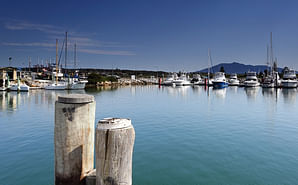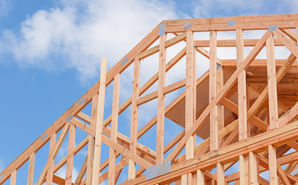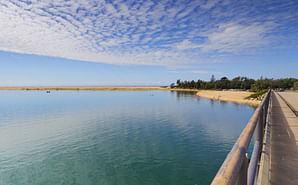Heritage advice
Information on management and developing heritage buildings with the Bega Valley Shire.
On this page:
- Local government and heritage management
- Check the Local Environment Plan for local heritage listings
- Getting approval to carry out work
- Heritage Conservation Areas
- Development in the vicinity of heritage items
- Aboriginal Cultural Landscapes
- Report Aboriginal Objects
- Council’s heritage advisor can help
- For more heritage information
Local government and heritage management
Local government has a range of heritage responsibilities including:
- Identifying and protecting heritage, sometimes in compliance with state government requirements
- Acting as approval authority for the development of heritage places
- Administering land use planning laws
- Acting as an owner, manager or trustee of heritage places.
The key statutory matters relating to heritage are outlined in Council’s Local Environmental Plan and include:
- A statement of aims or purpose
- Designation of places of heritage significance (through a local heritage schedule)
- Development control over changes to places of heritage significance.
Check the Local Environment Plan for local heritage listings
Bega Valley Shire Council’s Local Environmental Plan 2013 provides the framework for management of the Shire’s heritage.
- Items of local and state heritage significance are identified in Schedule 5 of the LEP.
- Items of state heritage significance are listed on the NSW State Heritage Register and owners of these properties also need approval from the Heritage Council of NSW, as integrated development under Section 91 of the Environmental Planning and Assessment Act 1979. When proposing to make any significant changes to items on the State Heritage Register it is recommended that you contact the Heritage Office for preliminary advice. The number is 02 9873 8500.
The LEP requires owners of listed items to apply to Council before making certain alterations or additions. In assessing development applications involving changes to heritage items, Council tries to achieve a balance between retaining the heritage significance of a place and enabling them to continue to be used as a functional modern home or commercial building.
Getting approval to carry out work
Work does not require development consent if:
- Council determines the proposed development is of a minor nature or consists of maintenance of the heritage item.
- The proposed development would not adversely affect the significance of the heritage item.
- The proponent has notified the consent authority in writing of the proposed development, completed an application for minor works to heritage item or place and the consent authority has advised the applicant in writing, before any work is carried out, that it is satisfied that the proposed development consent is not otherwise required by this plan.
Development consent is required for works such as:
- Demolition of a heritage item
- Altering a heritage item by making structural changes to its interior
- Altering a heritage item by making structural or non-structural changes to the detail, fabric, finish or appearance of its exterior. The exception being changes resulting from any maintenance necessary for its ongoing protective care which does not adversely affect its heritage significance, that have been authorised in writing by Council
- Erecting a building within a heritage conservation area
- Subdividing land on which a heritage item is located or that is within a heritage conservation area
- Moving the whole or part of a heritage item
Heritage Conservation Areas
Conservation Areas are areas in which their history and elements such as pattern of subdivision , building style and siting, landscaping and streetscape create a sense of place that is worth preserving.
Within Conservation Areas there is a focus on the protection of the external envelope of buildings, gardens and structures.
Conservation Areas generally recognise that many buildings have heritage value and are expected to be retained, while other buildings are not expected to be retained as they may be of little heritage value.
To check whether your property is located within a Heritage Conservation Area, search Councils Online Maps, apply for a Section 149 Zoning Certificate or contact Councils Strategic Planning Section for advice.
Development in the vicinity of heritage items
If a development is proposed within the vicinity of a heritage item or Conservation Area, Council will consider whether the proposed development detracts from the importance of the heritage item in the local streetscape or townscape or from the character of a conservation area.
Council defines the vicinity as being within generally a 100m radius from the heritage building or Conservation Area.
Aboriginal Cultural Landscapes
The Aboriginal Cultural Heritage Landscape Map was developed by Council, in collaboration with representatives of the local Aboriginal community and Local Aboriginal Land Councils to indicate land in the Bega Valley Shire that has a higher probability of Aboriginal cultural heritage values.
The map was devised for a number of purposes including improving the information available to help landowners, Council staff and other government agencies meet legislative requirements regarding Aboriginal cultural heritage, increasing local awareness of Aboriginal cultural heritage values, and improving the protection of land with cultural significance to local Aboriginal people.
The Aboriginal Cultural Heritage Landscape Map indicates areas which have a high probability of Aboriginal cultural heritage values, this includes land within:
- 500m from identified Aboriginal travel routes
- 500m from natural waterbodies and watercourses
- 500m from major waterways
- 1km from estuaries
- 1km from the coastline
Council’s Development Control Plan contains detailed guidance on considerations for and levels of assessment of Aboriginal cultural heritage for development applications, including how publicly available sources of information, such as the Aboriginal Cultural Heritage Landscape Map, can be used in the assessments carried out in accordance with the Due Diligence Code of Practice for the Protection of Aboriginal Objects in New South Wales 2010.
For ease of viewing, the map has been divided into sections which cover the Shire:
- Bega - Candelo Aboriginal Cultural Landscape - Map 011
- Bega North Aboriginal Cultural Landscape - Map 011B
- Bega South Aboriginal Cultural Landscape - Map 011C
- Bemboka Aboriginal Cultural Landscape - Map 003A
- Bermagui Aboriginal Cultural Landscape - Map 017C
- Bemboka surrounds Aboriginal Cultural Landscape - Map 003
- Broadwater - Griegs Flat Aboriginal Cultural Landscape - Map 020
- Brogo - Stony Creek Aboriginal Cultural Landscape - Map 010
- Candelo Aboriginal Cultural Landscape - Map 011A
- Cobargo Aboriginal Cultural Landscape - Map 017A
- Coolagolite - Dignnams Creesk Aboriginal Cultural Landscape - Map 017
- Cuttagee - Wapengo Aboriginal Cultural Landscape - Map 018
- Eden Aboriginal Cultural Landscape - Map 021A
- Eden surrounds Aboriginal Cultural Landscape - Map 021
- Jellat - Reedy Swamp Aboriginal Cultural Landscape - Map 019A
- Lochiel Aboriginal Cultural Landscape - Map 012C
- Merimbula - Tura Beach Aboriginal Cultural Landscape - Map 020B
- Nadgee Aboriginal Cultural Landscape - Map 015
- Nadgee East Aboriginal Cultural Landscape - Map 023
- Narrabarba - Timbillica Aboriginal Cultural Landscape - Map 014
- Nungatta Aboriginal Cultural Landscape - Map 007
- Pambula Aboriginal Cultural Landscape - Map 020A
- Pericoe Aboriginal Cultural Landscape - Map 006
- Rocky Hall Aboriginal Cultural Landscape - Map 005
- Tantawangalo - Mogilla Aboriginal Cultural Landscape - Map 004
- Tathra - Kalaru Aboriginal Cultural Landscape - Map 019B
- Tathra - Kalaru surrounds Aboriginal Cultural Landscape - Map 019
- Tinpot Aboriginal Cultural Landscape - Map 016
- Towamba Aboriginal Cultural Landscape - Map 013
- Tura Beach North Aboriginal Cultura Landscape - Map 020C
- Upper Brogo Aboriginal Cultural Landscape - Map 002
- Verona - Wandella Aboriginal Cultural Landscape - Map 009
- Wadbilliga Aboriginal Cultural Landscape - Map 001
- Wallaga Lake Aboriginal Cultural Landscape - Map 017B
- Wonboyn Cultural Landscape - Map 022A
- Wonboyn surrounds Aboriginal Cultural Landscape - Map 022
- Wyndham - Lochiel Aboriginal Cultural Landscape - Map 012
- Wyndham Aboriginal Cultural Landscape - Map 012A
- Wolumla - Yellow Pinch Aboriginal Cultural Landscape - Map 012B
- Yowrie Aboriginal Cultural Landscape - Map 008
Report Aboriginal Objects
If you find or believe you have found an Aboriginal object, leave it where it is and report the object and its location to Heritage NSW by emailing ahims@environment.nsw.gov.au.
Even if you believe the object is in danger of being damaged or harmed, it is very important to leave it alone and report it immediately. You may be committing an offence if you handle or move the object. The National Parks and Wildlife Act 1974 calls for the location of Aboriginal objects to be reported regardless of whether they are on public or private land.
If you’re unsure what information or relevant details should be included when reporting an Aboriginal object, please contact Heritage NSW at ahims@environment.nsw.gov.au or by calling 02 9585 6345.
If you mistakenly take an Aboriginal object, or find yourself in possession of one, please return it to your local Heritage NSW office or phone Environment Line: 131 555 for further information about how to return the object to its rightful owners as soon as possible.
Council’s heritage advisor can help
Council provides the services of a heritage advisor who can assist with heritage related matters. This service is generally free to owners of heritage-listed properties however fees may apply in some cases. Generally Council’s Heritage Advisor visits the Shire once a month.
Appointments must be booked in advance by calling Councils Strategic Planning section on 6499 2222.
For more heritage information go to:
- Policy: Heritage Works of a Minor Nature - To view the policy visit Public Policies and search for the term 'heritage works'.
- Procedure: Assessment of works of a minor nature for Heritage Items or within Heritage Conservation Areas - To view the policy visit Public Policies and search for the term 'assessment of works'.






